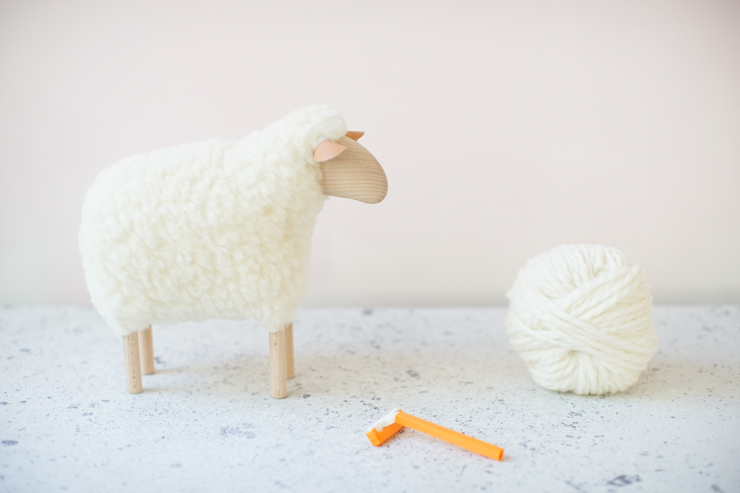Fabrics for sewing: Wool

Hello dressmakers!
As temperatures are getting cooler at the moment, I'd like to share with you a little article on a material that's going to be your ally: wool!
What is wool? Wool is the fleece of sheep or other animals. So we can talk about alpaca wool (which is a species close to the llama), angora wool (in this case it's rabbit or angora goat but not cat), or even camel wool! It's important to emphasize that we're talking about fleece here, meaning that only the "hair" is harvested - the animal isn't killed, and in the case of sheep, it's even good for them to get rid of their excess hair (a bit like when you go to the hairdresser to have your ends trimmed). Generally soft, these fibers are made into yarns that are knitted, woven or felted. The special feature of this material is that it absorbs very little water, and in addition to insulating against the cold, it regulates body heat.
How do you recognize it? As always, you can burn it. The smell will not be very pleasant, like that of a grilled hair, and the ash will be very black. To the touch, it's fluffy or felt-like.
What to do with it Of course, it's the ideal material for winter. Wool coats and jackets will keep you warm and absorb little rain and snow (I'm not talking about standing in a shower). Very fine and combed, it will make pretty suits. It is naturally slightly elastic, especially when left uncombed.
Which weave to choose? In "yarn" form, you can knit it. In woven form, you can make jackets, coats, suits, dresses, skirts... Pay attention to its name and appearance! A puffy, carded wool will be very easy to work with, and the mist will pass like a charm (perfect for a coat for a beginner). For a much more insulating and even more waterproof material (for coats, skirts or hats, for example), felted or boiled wool is THE solution. Felted or boiled means that the fibers have been superimposed in several layers, moistened or steamed, so that they bind together. Once the "mattress" of fibers is dry, the fibers won't fray or pilling. Worsted wool is a very fine, tight weave that's perfect for suits or winter dresses, but beware: it's not very forgiving of mistakes and it's difficult to get the mist through. I recommend it to the experienced.
Before I leave you, I'd like to explain a few names:
- virgin wool means that it has not been recycled
- baby wool is wool from an animal's first fleece, often from a baby.
- super 80's to 250's (depending on the number), refers to the fineness of the yarn: the higher the number, the finer (and more expensive) the yarn.
- overall, long and/or rare fibers are the most sought-after and expensive, and are known as: cashmere, angora, alpaca (from vicuña).
Last but not least, for sweaters or coats that pellet, consider buying a "razor" that will cut the pilling, rather than pulling on it, because in doing so, you remove material. Clean your clothes at the dry cleaner's. You can also hand-clean your sweaters with a mild shampoo and cold/ lukewarm water, and leave them to dry flat on a towel, without wringing them out.
Have a warm winter, and see you soon with our new collection!
Laure




